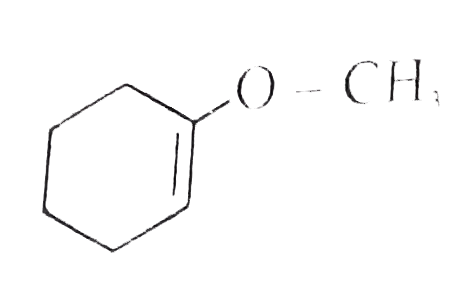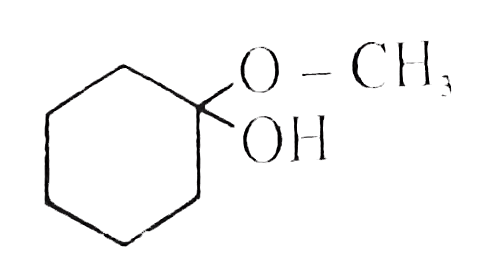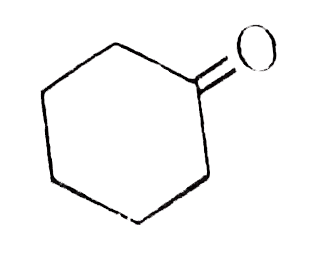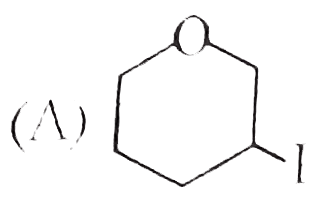Alkenes undergo electrophilic addition reactions. Electrophilic addition to unsymmetrical alkenes involve the formation of a more stable carbocation intermediate in the first step which is rate determining and carbocation is then attacked by a nuclephile to form product
 +H2OH2SO4−−−→ Product
+H2OH2SO4−−−→ Product
The major product is 
The major product is 
Major product give +ve Tollen's test
Major product give +ve iodoform test
The correct Answer is:B
Step by step video, text & image solution for Alkenes undergo electrophilic addition reactions. Electrophilic addition to unsymmetrical alkenes involve the formation of a more stable carbocation intermediate in the first step which is rate determining and carbocation is then attacked by a nuclephile to form product +H_(2)O overset(H_(2)SO_(4))rarr Product by Chemistry experts to help you in doubts & scoring excellent marks in Class 12 exams.
Updated on:21/07/2023Topper's Solved these Questions
- TEST PAPERSBOOK - ALLENCHAPTER - TEST PAPERSEXERCISE - CHEMISTRY
19 Videos
- TEST PAPERSBOOK - ALLENCHAPTER - TEST PAPERSEXERCISE - part-2 Chemisty
18 Videos
- TEST PAPER 4BOOK - ALLENCHAPTER - TEST PAPER 4EXERCISE - CHEMISTRY
45 Videos
- THERMODYNAMICS BOOK - ALLENCHAPTER - THERMODYNAMICS EXERCISE - EXERCISE -4
18 Videos
Similar Questions
Knowledge Check
Alkenes undergo electrophilic addition reactions. Electrophilic addition to unsymmetrical alkenes involve the formation of a more stable carbocation intermediate in the first step which is rate determining and carbocation is then attacked by a nuclephile to form product
HO−CH2−CH2−CH2−CH=CH2I2−−−−−→NaHCO3 major product formed isA B
B CHO−CH2−CH2−ClIH−CIlH2DCH2=CH−CH2−CH2−CHO
CHO−CH2−CH2−ClIH−CIlH2DCH2=CH−CH2−CH2−CHOAlkenes undergo electrophilic addition reactions. Electrophilic addition to unsymmetrical alkenes involve the formation of a more stable carbocation intermediate in the first step which is rate determining and carbocation is then attacked by a nuclephile to form product
Which one of the following alkene reacts most readily with HCI?ACH2=CH−ClBCH2=CH−O−CH3CCH3−CH=CH−CH3D
Electrophilic additions reactions proceed in two steps. The first step involves the additions of an electrophile. Name the type of intermediate formed in the first step of the following addition reaction H3C−HC=CH2+H+→?
A2∘ CarbanionB1∘ CarbocationC2∘ CarbocationD1∘ Carbanion
Electrophilic addition reactions proceed in two steps. The first step involves the addition of an electrophile. Name the type of intermediate formed in the first step of the following addition reaction.
H3C−HC=CH2+H+→?
View SolutionThe major product formed in the reaction is :
_E01_217_Q01.png) +HNO3conc.H2SO4−−−−−−→
+HNO3conc.H2SO4−−−−−−→
View SolutionElectrophillic addition reaction proceed in two steps. The first step involves the addition of an electrophile. Name the type of intermediate formed in the first step of the following addition reaction.
H2C−HC=CH2+H+→ ?
View SolutionElectrophilic additions reactions proceed in two steps. The first step involves the additions of an electrophile. Name the type of intermediate formed in the first step of the following addition reaction H3C−HC=CH2+H+→?
View SolutionA : Alkynes is more reactive than alkene towards electrophilic addition reaction.
R : Alkynes form stable carbocation than alkene.
View Solution

_S01_367_Q01.png)